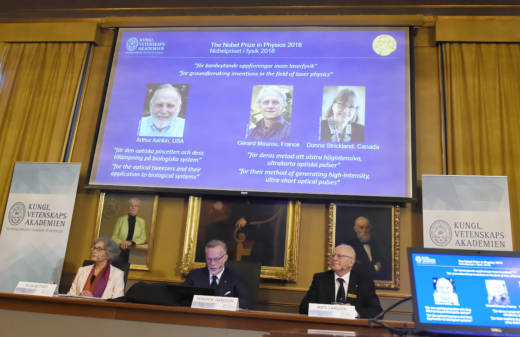Three scientists from the United States, Canada and France won the Nobel Prize in physics Tuesday for work with lasers described as revolutionary and bringing science fiction into reality.
The American, Arthur Ashkin of Bell Laboratories in New Jersey, entered the record books of the Nobel Prizes by becoming the oldest laureate at age 96. Donna Strickland, of the University of Waterloo in Canada, became the first woman to win a Nobel in three years and is only the third to have won the prize for physics.
Frenchman Gerard Mourou of the Ecole Polytechnique and University of Michigan will share half of the 9 million kronor ($1.01 million) the prize carries with Strickland; Ashkin gets the other half.
Sweden’s Royal Academy of Sciences, which chose the winners, said Ashkin’s development of “optical tweezers” that can grab tiny particles such as viruses without damaging them realized “an old dream of science fiction — using the radiation pressure of light to move physical objects.”
The tweezers are “extremely important for measuring small forces on individual molecules, small objects, and this has been very interesting in biology, to understand how things like muscle tissue work, what are the molecule motors behind the muscle tissue,” said David Haviland of the academy’s Nobel committee.

